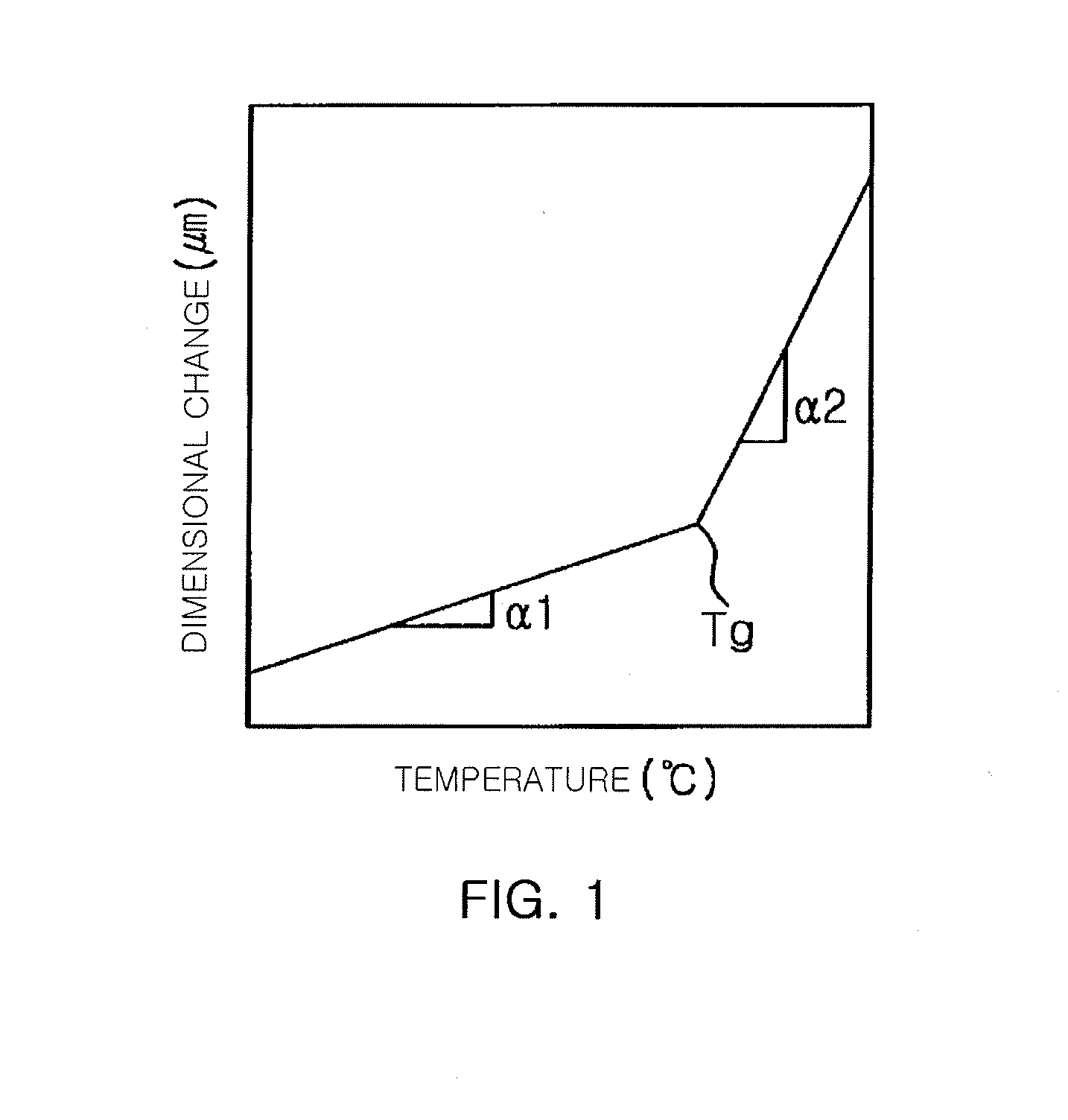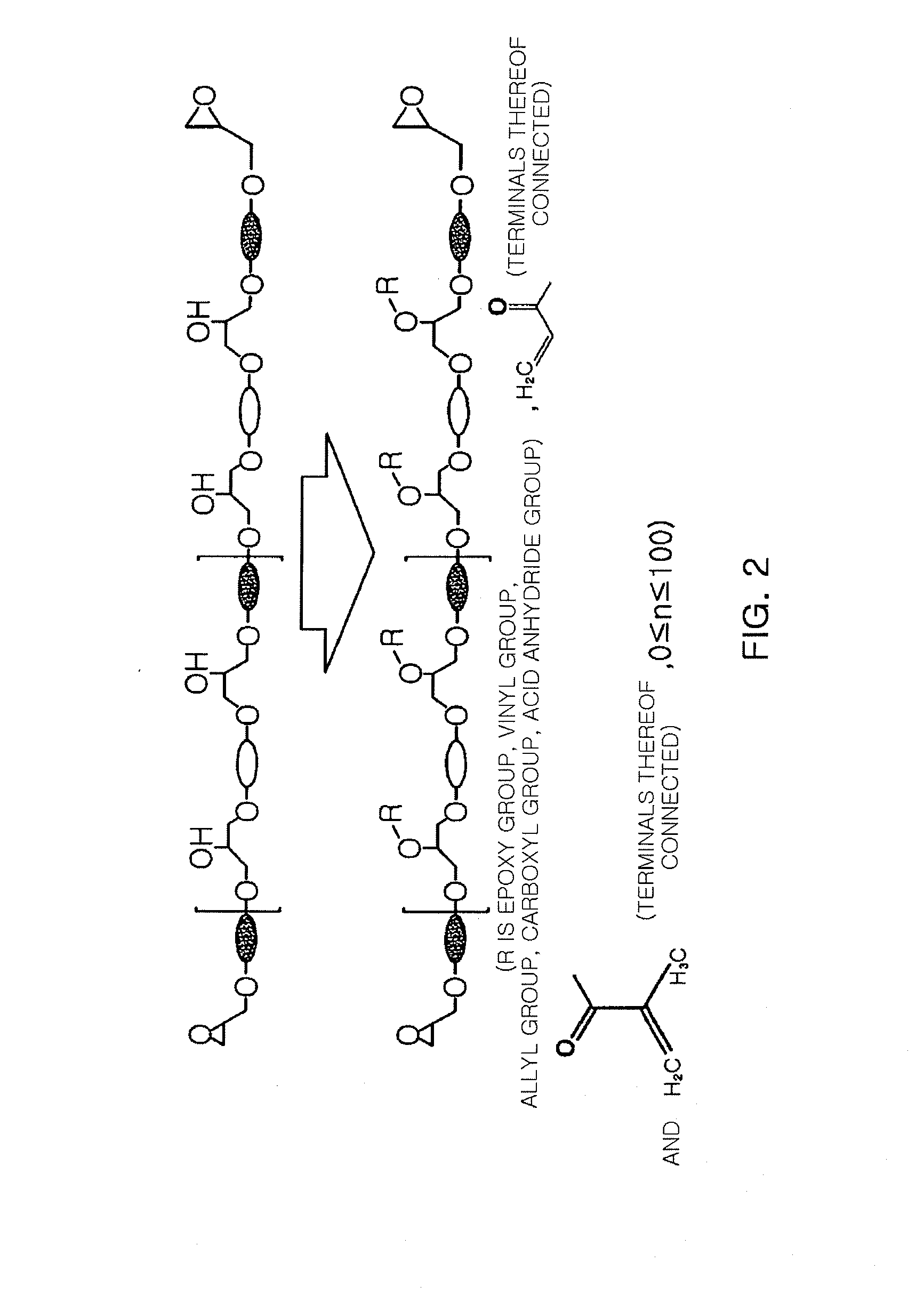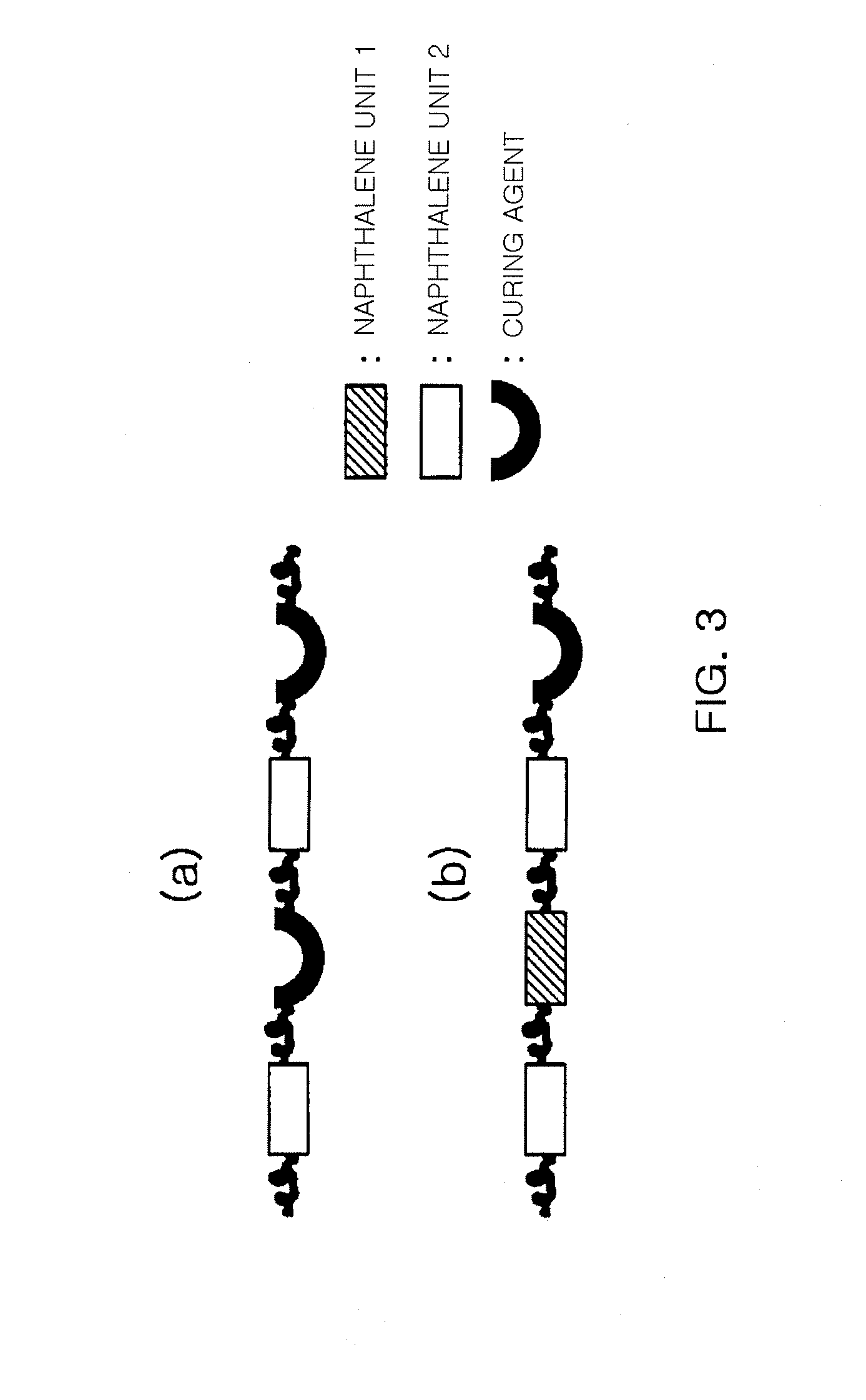Novel epoxy resin and epoxy resin composition comprising the same
- Summary
- Abstract
- Description
- Claims
- Application Information
AI Technical Summary
Benefits of technology
Problems solved by technology
Method used
Image
Examples
example 1
Synthesis of Naphthalene-Based Epoxy Resin
[0132]34 g of naphthalene-epoxy monomer (diglycidyl ether of 2,7-dihydroxyl naphthalene) and 0.85 g of tri-ethyl benzyl ammonium chloride were put into a flask, and then air in the flask was evacuated to a vacuum. Next, 100 Ml of CH3CN was added to the flask and stirred for 5 min to obtain a homogeneous solution. Subsequently, a solution of 5 g of 1,6-dihydroxyl naphthalene in 100 Ml of CH3CN was slowly added dropwise to the homogeneous solution, and the mixture was left to react at 80° C. for 24 hours. Subsequently, the solvent was removed with an evaporator, and the residue was dissolved in 500 Ml of ethyl acetate and worked up with H2O. Subsequently, the organic layer was separated, and ethyl acetate was removed with an evaporator to obtain a naphthalene-based epoxy resin of the following Formula 11. The synthetic reaction formula of the thus-obtained naphthalene-based epoxy resin of the Formula 11 is shown in the following Reaction Formu...
example 2
Preparation of Thermosetting Product Using Naphthalene-Based Epoxy Resin
[0134]1.95 g of the naphthalene-based epoxy resin prepared in Example 1 was added in 30 g of methylene chloride, and the resulting mixture was uniformly mixed using a mixer. 0.45 g of diaminodiphenylmethane (DDM) (Formula 12) was added to the mixture and mixed using a shaker to obtain a homogeneous solution. The solution prepared was placed into a vacuum oven preheated to 120° C., left for 5 min to remove the solvent, and then poured into a mold preheated to 120° C. Next, the product was left to react at 150° C. under nitrogen atmosphere for 2 hours and cured at 230° C. for further 2 hours by increasing the temperature of the oven to obtain a resin cured product.
example 3
Preparation of Epoxy Resin Having Acrylate Side Functional Group
[0140]10 g of a trimer epoxy resin in the following Formula 13 was added to 60 Ml of methylene chloride in a 250 Ml flask at room temperature, and the resulting solution was stirred. 9.88 Ml of diisopropyl ethylamine was added to the solution at 0° C., and immediately 4.6 Ml of acryloyl chloride was slowly added to the resulting mixture. The mixture was left to react at 0° C. for 2 hours, and then the organic layer was worked up with brine. The remaining water in the organic layer was removed with MgSO4, and then the resulting mixture was evaporated to remove the solvent and obtain an epoxy resin 14 having an acrylate group. The synthetic reaction formula of a new epoxy in Example 3 is shown in the following Reaction Formula 5.
[0141]1H NMR (400 MHz, CDCl3) δ 8.14 (d, J=8.8 Hz, 1H), 7.66 (d, J=8.8 Hz, 4H), 7.32 (d, J=3.2 Hz, 2H), 7.16-7.00 (m, 10H), 6.74 (dd, J=3.2 Hz, 1H), 6.50 (d, J=17.2 Hz, 2H), 6.20 (q, J=10.0 Hz, 2H...
PUM
| Property | Measurement | Unit |
|---|---|---|
| Temperature | aaaaa | aaaaa |
| Temperature | aaaaa | aaaaa |
| Temperature | aaaaa | aaaaa |
Abstract
Description
Claims
Application Information
 Login to View More
Login to View More - R&D
- Intellectual Property
- Life Sciences
- Materials
- Tech Scout
- Unparalleled Data Quality
- Higher Quality Content
- 60% Fewer Hallucinations
Browse by: Latest US Patents, China's latest patents, Technical Efficacy Thesaurus, Application Domain, Technology Topic, Popular Technical Reports.
© 2025 PatSnap. All rights reserved.Legal|Privacy policy|Modern Slavery Act Transparency Statement|Sitemap|About US| Contact US: help@patsnap.com



